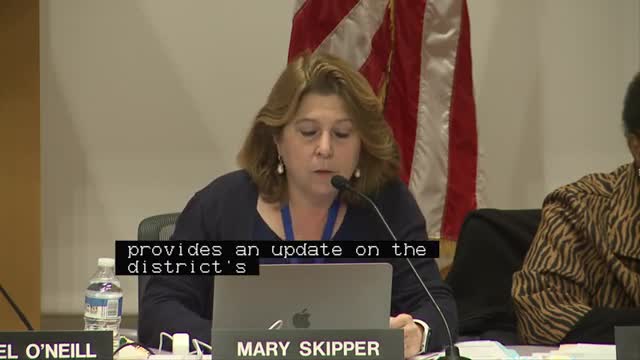Enrollment dip, transportation improvements and $18.8M in grants highlighted at Boston School Committee meeting
November 20, 2025 | Boston Public Schools, School Boards, Massachusetts

This article was created by AI summarizing key points discussed. AI makes mistakes, so for full details and context, please refer to the video of the full meeting. Please report any errors so we can fix them. Report an error »

Boston Public Schools officials told the School Committee on Nov. 19 that the district’s mid‑October enrollment was 46,824 students, a drop of about 1,700 students compared with the previous year. Superintendent Mary Stifel and the chief financial officer explained that the decline is driven largely by decreases in international immigration and lower birth rates, a national trend, and that the loss has the greatest immediate impact at the high‑school level.
Stifel said the district has been monitoring transportation on‑time performance (OTP) and has seen improvements since the start of the school year. "We started the year off with 66% morning OTP and 75% afternoon OTP on the first day of school," she said, adding that the district is “averaging 94% morning OTP so far in November” and remains committed to continuous improvement.
CFO staff described fiscal effects of enrollment shifts and noted that BPS’s general appropriation is set by the city council and that many enrollment‑based grant allocations use prior‑year counts, so revenue adjustments can lag. The CFO provided a back‑of‑the‑envelope figure using an approximate $16,000 per‑student direct school budget: a decline of 1,700 students equates roughly to $27 million in school funding footprint, subject to adjustments and 'soft landing' practices for affected schools.
Separately, the committee approved five grants totaling $18,775,752 by unanimous consent. The largest item is a continuing federal IDEA (Individuals with Disabilities Education Act) entitlement grant of nearly $18.2 million for the 2025–26 school year to serve students with disabilities. Other grants included special education early childhood funding and smaller competitive grants to support civics teaching and college planning pilots.
Committee members and the public pressed for more granular enrollment projections, demographic breakdowns (including multilingual learner counts), and clearer explanations of how revenue and programmatic capacity will respond over multiple years. District staff said they will provide additional charts and school‑level data in subsequent briefings and will return with budget impact estimates in December.
No formal action was taken on enrollment projections at the Nov. 19 meeting; the long‑term facilities plan presentation later in the same session described how the district’s footprint proposals reflect the enrollment trends and capital constraints.
Stifel said the district has been monitoring transportation on‑time performance (OTP) and has seen improvements since the start of the school year. "We started the year off with 66% morning OTP and 75% afternoon OTP on the first day of school," she said, adding that the district is “averaging 94% morning OTP so far in November” and remains committed to continuous improvement.
CFO staff described fiscal effects of enrollment shifts and noted that BPS’s general appropriation is set by the city council and that many enrollment‑based grant allocations use prior‑year counts, so revenue adjustments can lag. The CFO provided a back‑of‑the‑envelope figure using an approximate $16,000 per‑student direct school budget: a decline of 1,700 students equates roughly to $27 million in school funding footprint, subject to adjustments and 'soft landing' practices for affected schools.
Separately, the committee approved five grants totaling $18,775,752 by unanimous consent. The largest item is a continuing federal IDEA (Individuals with Disabilities Education Act) entitlement grant of nearly $18.2 million for the 2025–26 school year to serve students with disabilities. Other grants included special education early childhood funding and smaller competitive grants to support civics teaching and college planning pilots.
Committee members and the public pressed for more granular enrollment projections, demographic breakdowns (including multilingual learner counts), and clearer explanations of how revenue and programmatic capacity will respond over multiple years. District staff said they will provide additional charts and school‑level data in subsequent briefings and will return with budget impact estimates in December.
No formal action was taken on enrollment projections at the Nov. 19 meeting; the long‑term facilities plan presentation later in the same session described how the district’s footprint proposals reflect the enrollment trends and capital constraints.
View full meeting
This article is based on a recent meeting—watch the full video and explore the complete transcript for deeper insights into the discussion.
View full meeting
